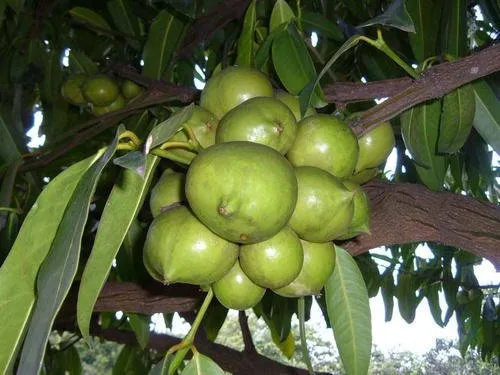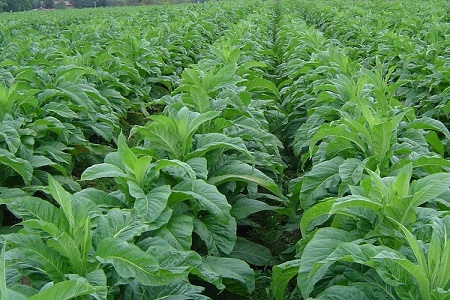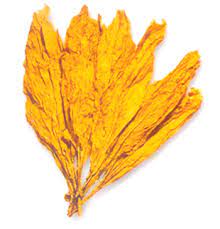Garcinia pedunculata, a medicinal plant commonly called 'Borthekera' in the Assamese language, traditionally forbidden for raw consumption, has been found to protect from heart diseases. Administration of the dried pulp of the ripe fruit of the medicinal plant reduced cardiac hypertrophy indicators and oxidative stress and heart inflammation brought on by isoproterenol(ISO).
The sun-dried slices of the ripe fruit are used for culinary and medicinal purposes and are known to have therapeutic properties like anti-inflammatory, anthelmintic, antibacterial, antifungal, antidiabetic, hypolipidemic, nephroprotective, and even neuroprotective activity. With scientific interventions seeking proof of these claims, multiple studies have been reported that G. pedunculata is a rich source of antioxidants. However, the cardioprotective potential has yet to be explored earlier.
Scientists of Institute of Advanced Study in Science and Technology (IASST), an autonomous institute of the Department of Science and Technology (DST), explored this medicinal plant's potential to prevent heart diseases. A double dosage of bioactive chloroform fraction (GC) of the herb was fed to Wistar rats at 24-hour intervals (85mg/kg body weight (BW) for 28 days.
To assess the therapeutic effect, this was followed by injection of isoproterenol following the isoproterenol-induced myocardial infarction model. All the animals were analyzed, revealing that the disease group had significant ST wave (ST is the segment representing the interval between depolarization and repolarization of the heart's ventricles) elevation, indicating myocardial infarction, which was normalized with Atenolol and GC treatment. Cardiac hypertrophy, cardiac troponin I, tissue lipid peroxidation, and serum inflammatory markers were all significantly elevated in the disease group, which were maintained at near-normal levels in the GC pretreated groups. The endogenous antioxidants were also revamped in the GC-treated groups.
These improvements are attributed to the excellent antioxidant and anti-inflammatory potential of GC that helped protect the heart against isoproterenol-induced injury.
Moreover, the chemical characterization of the chloroform fraction revealed the presence of active phytocompounds like hydroxycitric acid, hydroxycitric acid lactone, and parvifoliquinone along with compounds like GB-1a, Garcinone A, 9-Hydroxycalabaxanthone, Chlorogenic acid, and Garcinol as well. The therapeutic effects reported in this study are likely due to the presence of all these compounds. All these results strongly infer the good cardioprotective potential of G. pedunculata fruit abundantly available in Northeast India.
National Conference on Agriculture for Zaid Campaign-2023 and Updates
The National Conference on Agriculture for Zaid Campaign-2023, chaired by Union Agriculture and Farmers Welfare Minister Shri Narendra Singh Tomar, mentioned about the historic agricultural production of 323 million tonnes(As per Advanced estimates).
- The number of Kisan Samriddhi Kendras has now increased to 12,000, which will help farmers with the procurement of fertilizers and other agricultural inputs.
- The PM-PRANAM scheme, aimed at reducing the usage of chemical urea, is running smoothly, benefiting farmers across the country.
- The Centre is introducing a Seed Traceability system that ensures the availability of quality seeds to farmers, promoting sustainable agriculture.
- The Pesticide Management System will be implemented to manage and control the usage of pesticides and prevent the adverse effects of pesticide overuse.
What is Zaid crops?
Zaid crops, also known as summer or short duration crops, are a group of crops that are grown during the hot and humid monsoon season. These crops are mainly grown in the plains of North India and are crucial for the food security and livelihood of millions of farmers.
Essential facts about Zaid crops:
The most common Zaid crops include watermelon, muskmelon, cucumber, bitter gourd, pumpkin, cowpea, and green gram. These crops have a short duration of 60-90 days and are harvested before the arrival of the winter season.
Zaid crops are crucial for the farmers as they provide an additional source of income during the off-season. These crops also help in the efficient utilization of land and water resources. In addition, they are an important source of nutrition for the local population.
Zaid crops require well-drained soils with good fertility and water-holding capacity. They grow well in hot and humid conditions, with a temperature range of 25-35°C. These crops require frequent irrigation and proper pest management to ensure a good yield.
Zaid crops are mainly grown in the states of Uttar Pradesh, Haryana, Punjab, Rajasthan, Bihar, and Madhya Pradesh. These states have a large number of small and marginal farmers who depend on Zaid crops for their livelihood. The farmers face various challenges in the cultivation of Zaid crops, such as inadequate irrigation facilities, high input costs, low productivity, and lack of market access. In addition, the changing climate patterns and increasing pest attacks pose a significant threat to the crops. Government is taking sufficient steps to alleviate these issues and help farmers cultivate promptly.
Government Permits Sale of Excess and Unregistered Tobacco on Auction Platforms Without Penalty
The Indian government has permitted the auction sale of excess tobacco produced by registered growers and unauthorized tobacco produced by unregistered growers in Karnataka, without any penalty for the 2022-23 crop season. The decision was made due to the low production during this season.
The sale of excess Flue Cured Virginia tobacco will benefit the farmers of the state to recover their losses. This will help the growers to continue their livelihoods.
In Karnataka, 40,207 farmers cultivated FCV tobacco in an area of 60,782 hectares, with a total production of 59.78 million kilograms against the crop size of 100 million kilograms fixed by the Tobacco Board. This was due to the continuous rains during June and July 2022.
What is Flue-Cured Virginia Tobacco?
Flue-Cured Virginia tobacco is a type of tobacco that is cured in a closed system with controlled heat and humidity. This process is known as flue-curing and it helps to preserve the natural sweetness of the tobacco while reducing its harshness. The tobacco leaves are hung in a barn-like structure, and heat is passed through them using pipes or ducts to evaporate the moisture content. This process is carried out for several days until the leaves are dry and ready for use.
Where is Flue-Cured Virginia Tobacco Grown in India?
Flue Cured Virginia tobacco is grown extensively in Andhra Pradesh and Karnataka.
India is one of the top producers of Flue Cured Virginia tobacco in the world. The state of Andhra Pradesh alone accounts for 50% of India's total tobacco production. The state is known for its ideal climate and soil conditions, which make it suitable for the cultivation of Flue Cured Virginia tobacco.
The tobacco is grown mainly in the districts of Prakasam, Nellore, Guntur, and Krishna in Andhra Pradesh. The crop is planted in the months of June and July and is harvested in December and January. The tobacco leaves are then taken to the curing barns, where they are flue cured.
The Flue Cured Virginia tobacco is used for the production of various tobacco products, including cigarettes, cigars, and pipe tobacco. The tobacco is known for its rich flavor and aroma, making it a popular choice among tobacco users.
In recent years, the Indian government has taken several steps to regulate the tobacco industry and curb tobacco use. The government has imposed high taxes on tobacco products and introduced various health awareness campaigns to discourage tobacco use.
However, the tobacco industry continues to be an important contributor to the Indian economy. The industry provides employment to thousands of people and generates significant revenue for the government.



